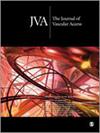成功拔出新生儿打结的腔外导管:病例报告和文献综述。
IF 1.6
3区 医学
Q3 PERIPHERAL VASCULAR DISEASE
Journal of Vascular Access
Pub Date : 2025-05-01
Epub Date: 2024-03-27
DOI:10.1177/11297298241240647
引用次数: 0
摘要
新生儿重症监护室(NICU)广泛使用腔内导管(ECC)。ECC 导管在血管内打结是一种意想不到的并发症,大多在成人中出现。很少有新生儿在插入和拔出 ECC 时打结的报道。在本病例中,我们发现新生儿在插入中心导管时自发形成了一个结,最终成功将其拔除。本文章由计算机程序翻译,如有差异,请以英文原文为准。
Successfully removing a knotted epicutaneo-caval catheter inserted in a neonate: A case report and literature review.
Epicutaneo-caval catheter (ECC) has been widely used in neonatal intensive care units (NICUs). ECC line Knots in intravascular is an unexpected complication and has been reported in adults mostly. Few cases reported knot formation during ECC insertion and removal in neonates. In this case, we introduced a spontaneous knot formation during the insertion of the central catheter, which was finally successfully removed.
求助全文
通过发布文献求助,成功后即可免费获取论文全文。
去求助
来源期刊

Journal of Vascular Access
医学-外周血管病
CiteScore
3.40
自引率
31.60%
发文量
181
审稿时长
6-12 weeks
期刊介绍:
The Journal of Vascular Access (JVA) is issued six times per year; it considers the publication of original manuscripts dealing with clinical and laboratory investigations in the fast growing field of vascular access. In addition reviews, case reports and clinical trials are welcome, as well as papers dedicated to more practical aspects covering new devices and techniques.
All contributions, coming from all over the world, undergo the peer-review process.
The Journal of Vascular Access is divided into independent sections, each led by Editors of the highest scientific level:
• Dialysis
• Oncology
• Interventional radiology
• Nutrition
• Nursing
• Intensive care
Correspondence related to published papers is also welcome.
 求助内容:
求助内容: 应助结果提醒方式:
应助结果提醒方式:


